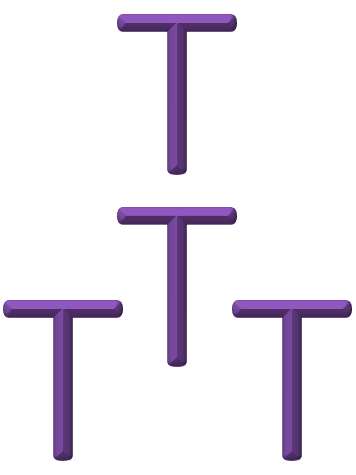From Seeing in 3D to Thinking in 4T
/You see in 3D, but the future of work requires that all of us, not just organizational leaders, think (and act) in 4T. We all need basic fluency in how to integrate our talents, technology, and techniques as we work toward the targets of whatever our work is -- whether paid work or the work of our lives. No silver bullets: we can't just rely on the dimension we’re most comfortable with or have close at hand.
The 4Ts
- Target: project and/or task goal
- Talent: people working toward -- and against -- the target
- Technology: everything from shovels and furniture layouts, to hard automation and robots, to text messaging platforms, basic bots and machine learning -- all the tools you have at your disposal.
- Technique: the organizational processes pulling together the work of the talent and technology
Why Contrast 3D and 4T?
Because 67 years of calling these ideas “sociotechnical systems theory” hasn’t moved this critical idea into the mainstream. I think we need a catchy jingle.
Why Now More Than Ever?
Klaus Schwab of the World Economic Forum and others claim we are in the Fourth Industrial Revolution. The prior three industrial revolutions were about technologies (water and steam power, electric power, electronic and information technology). Now we are confronted by a “fusion of technologies across the physical, digital and biological worlds” (p.1).
While Thinking in 4T was important in the past, it’s now critical at all levels of organization and life. The National Science Foundation seems aligned with this perspective, citing “The Future of Work at the Human-Technology Frontier” as one of its ten big ideas. Their focus: “Understanding how constantly evolving technologies are actively shaping the lives of workers and how people, in turn, can shape those technologies, especially in the world of work.”
Decades of research, starting with sociotechnical systems theory, but more famously that of Frederick Brooks, an A.M. Turing Award winner and team leader on the IBM System/360, shows that people, technology, and organizations must be managed in concert to be effective. Brooks wrote, “...we see no silver bullet. There is no single [emphasis added] development, in either technology or in management technique, that by itself promises even one order of magnitude improvement in productivity, in reliability, in simplicity” (p. 10).
Control of Our Work
A hypothesis to explore in a future post: Job security is higher when automation/artificial intelligence is added by the worker/team rather than management.
Our Futures
From Target to Talent, Technology, and Technique, our work is more dynamic than I've seen it in my career. Targets are getting needed attention as we have to make choices about where to put our increasingly divided attention. Talent is incredibly scarce and the skills needed seem to change daily. We all have access to technology that can help us in our work: everything from traditional woodworking tools available for shipment tomorrow to GPS with traffic routing to AI Logo art and digital assistants. Technique - how we bring together our talent and technology - is also gaining in sophistication. We know and care more about collaboration, supply chains, the makeup of teams, training, engagement, work crafting, coding.... and we know that it's a lifetime of learning.
Stay tuned for (and please share your own) strategies gain the benefits as we learn to Think in 4T. I'm developing a workshop for using the 4Ts to help people add automation and AI in their work and will be using these posts to offer prototypes.
I'm also interested in how these ideas are incorporated in K-12, vocational, and higher education. There is a huge focus on STEM and STEAM, but do these programs include the broader design thinking skills needed to leverage the foundations of talent and technology toward a work target? #ThinkingIn4T








